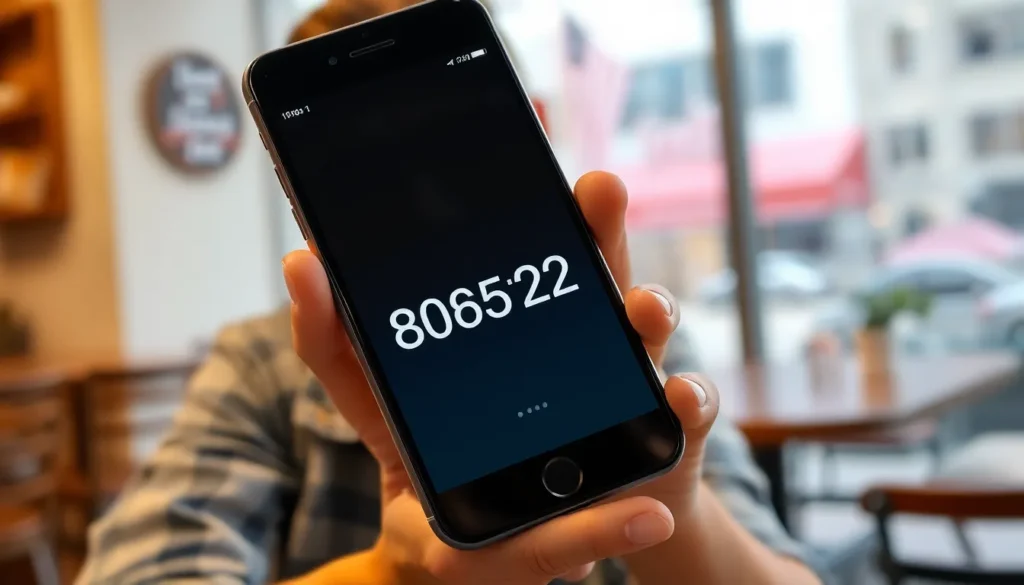Table of Contents
ToggleThe latest iPhone has arrived, and with it comes a whirlwind of excitement and curiosity. But wait—does it even have a SIM card? For those who’ve been living under a rock, this tiny piece of plastic is the key to connecting to your carrier. It’s like the VIP pass to the mobile party, and nobody wants to be left out!
Overview of iPhone Models
Current iPhone models vary in features and capabilities, including SIM card functionality. Understanding these differences helps consumers make informed choices.
iPhone 14 Series
The iPhone 14 series retained the traditional SIM card slot across all models. Users accessing mobile networks with physical SIM cards found this continuity beneficial. Both the standard iPhone 14 and the iPhone 14 Pro enabled dual SIM use, supporting a Nano SIM alongside an eSIM. This flexibility improved accessibility for those traveling internationally or managing multiple phone numbers seamlessly.
iPhone 15 Series
With the iPhone 15 series, Apple introduced significant changes, especially in the Pro models. The iPhone 15 and 15 Plus continued using the physical SIM slot, ensuring compatibility with existing SIM infrastructures. Meanwhile, the iPhone 15 Pro and Pro Max shifted towards an eSIM-only approach in the United States, eliminating the physical SIM card altogether. This decision aimed to enhance device security and expand storage options, aligning with modern connectivity trends worldwide.
SIM Card Options
The new iPhone models offer diverse SIM card options, catering to various user needs and preferences.
Physical SIM Cards
Many users appreciate the convenience of physical SIM cards. The iPhone 14 series includes a traditional SIM card slot, allowing physical connections to mobile networks. Users can easily switch SIM cards when changing carriers or traveling internationally. The iPhone 15 and 15 Plus also feature this slot, ensuring compatibility for those comfortable with physical cards. Dual SIM functionality works seamlessly, providing flexibility for personal and business numbers on one device. This option remains popular for users who value tangible SIM management.
eSIM Technology
Offering a modern approach, eSIM technology introduces connectivity without a physical card. The iPhone 15 Pro and Pro Max exclusively utilize eSIM in the United States, enhancing security and simplifying carrier switching. Users can activate cellular plans digitally, reducing the hassle of managing physical SIM cards. This transition aligns with advancements in mobile technology, allowing for quicker updates and connections. As more carriers support eSIM, users enjoy the benefits of using multiple plans or carriers effortlessly. Increased adoption of eSIM makes it a pivotal feature for future iPhone models.
How to Use a SIM Card in New iPhones
Using a SIM card in the latest iPhone models is straightforward, either with a physical SIM or an eSIM in certain versions. Users can easily access mobile networks and switch carriers when needed.
Installation Process
Installing a physical SIM card in the new iPhones involves a few simple steps. First, gather your SIM eject tool or a paperclip. After locating the SIM tray on the side of the phone, insert the tool into the small hole next to the tray to eject it. Next, place the SIM card into the tray, ensuring the gold contacts face down and the notch aligns correctly. Once inserted, push the tray back into the iPhone securely. For iPhone models using eSIM technology, users follow a different approach, usually involving a QR code from their carrier.
Activating Your SIM Card
Activating the SIM card depends on the chosen carrier. Users often start by powering on the iPhone and connecting to Wi-Fi. Once the phone detects the SIM card, prompts appear for activation. Following these prompts involves entering the required information, including the phone number associated with the SIM card. Some carriers provide a dedicated app for seamless activation, which simplifies the process further. It’s essential to check with the carrier for any specific instructions related to activation.
Comparison: New iPhones vs. Previous Models
The transition between new iPhone models showcases significant changes in SIM card support. The iPhone 14 series continued to offer physical SIM slots for all models, allowing users flexibility in choosing cellular plans. However, the iPhone 15 lineup departs from traditional practices. While the standard iPhone 15 and 15 Plus include physical SIM slots, the iPhone 15 Pro and Pro Max focus on eSIM technology exclusively in the U.S. This shift enhances security and aligns with evolving connectivity trends.
User experiences reflect mixed feedback regarding this transition. Many appreciate the convenience of eSIM technology for its simplicity when switching carriers. Others express concerns about the absence of physical SIM slots in the Pro models, which they find limiting. Some users prefer the familiarity of managing physical SIM cards, especially those with business and personal numbers. The convenience offered by dual SIM functionality in previous models remains a popular feature, particularly for those juggling multiple lines. Overall, these changes resonate differently within the diverse user community.
The latest iPhone models offer a blend of traditional and modern connectivity options. Users can choose between the convenience of physical SIM cards in the iPhone 14 and 15 series or embrace the eSIM technology in the iPhone 15 Pro and Pro Max. This shift reflects evolving user needs and preferences.
As eSIM adoption continues to rise, it’s clear that Apple is paving the way for a future where connectivity is both secure and streamlined. Whether opting for dual SIM functionality or transitioning to eSIM, users have the tools to stay connected in a way that suits their lifestyles.




